Integrated Sensing & Communications with Intelligent Metasurfaces: Synergies for 6G & Beyond
SPEAKERS:
- Aryan Kaushik
- Marco Di Renzo
ABSTRACT
Following the recently adopted IMT-2030/6G framework, two major technologies of integrated sensing and communications (ISAC), and intelligent metasurfaces (IM), i.e., reconfigurable intelligent surfaces (RIS), holographic MIMO (H-MIMO) and stacked IM, herald a new era of 6G connectivity by transcending conventional communication networks and infrastructure to highly energy efficient, with ultra-high data rates, shared hardware and spectral resources, and smart radio environment. These solutions can be explored at different frequency bands such as cmWave (essential 6G enabler) and sub-THz (complimentary spectrum for 6G), and realized through multiple use cases for 6G such as simultaneous imaging, mapping and localization, augmented human sense, smart health care, automation and robotics, etc. Furthermore, considering recent Third Generation Partnership Project (3GPP) Rel. 19, ISAC will play a vital role in 6G wireless standards, with RIS, H-MIMO, stacked IM, electromagnetic signal and information theory (ESIT) are some of the promising technologies for future releases. This tutorial will present a comprehensive overview of emerging ISAC and IM (RIS/H-MIMO/stacked IM) based 6G and beyond wireless communications including vision, timeliness with 5G-Advanced and 6G standardization, fundamentals, trends, challenges, and synergies between ISAC and IM (RIS/H-MIMO/stacked IM) technologies. In terms of emerging designs for ISAC and IM synergies, this tutorial will particularly focus on energy efficient RF optimization, wave-domain signalling, index modulation, IM aided ISAC based use cases, and various related applications.
BIOGRAPHIES OF THE SPEAKERS
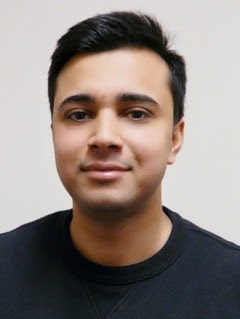 Aryan Kaushik is Assistant Professor at the University of Sussex, UK, since 2021. Prior to that, he has been with University College London, UK, University of Edinburgh, UK, and Hong Kong University of Science and Technology, Hong Kong. He has also held visiting appointments at Imperial College London, UK, University of Luxembourg, Luxembourg, Athena RC, Greece, and Beihang University, China. He has been External PhD Examiner internationally such as at Universidad Carlos III de Madrid, Spain, in 2023. He has been an Invited Panel Member at the UK EPSRC ICT Prioritisation Panel in 2023 plus Proposal Reviewer for the EPSRC, and he has led several collaborative projects forging industry and academic collaborations on topics of strategic importance. He is also a member of the One6G Association. He has been Editor of two upcoming books on ISAC and 6G NTN by Elsevier, and several journals such as IEEE Internet of Things Magazine (including miniseries on AI for IoT), IEEE Open Journal of the Communications Society (Best Editor Award 2023), IEEE Communications Letters (Exemplary Editor 2023), IEEE Communications Technology News (initiated IEEE CTN Podcasts Series) and several IEEE ComSoc journal/magazine special issues such as at IEEE IoT Magazine, IEEE OJCOMS, etc. He has been an invited/keynote and tutorial speaker for 54 academic and industry events, and conferences globally such as at IEEE ICC 2024, IEEE VTC-Spring 2024, IEEE ICMLCN 2024, IEEE Meditcom 2024, IEEE Globecom 2023, IEEE WCNC 2023, IEEE VTC-Spring 2023, EuCNC and 6G Summit 2023, One6G Summit 2023, and many others. He has been chairing in Organizing and Technical Program Committees of 9 flagship IEEE conferences such as IEEE ICC 2024-26, IEEE WCNC 2023-24, IEEE ICMLCN 2024 and IEEE WF-PST 2024. He has been actively organizing workshops (as General Chair of over 16 workshops) for IEEE ComSoc conferences globally such as at IEEE ICC 2024, IEEE Globecom 2023, IEEE WCNC 2023-24, IEEE PIMRC 2022-23, and several others.
Aryan Kaushik is Assistant Professor at the University of Sussex, UK, since 2021. Prior to that, he has been with University College London, UK, University of Edinburgh, UK, and Hong Kong University of Science and Technology, Hong Kong. He has also held visiting appointments at Imperial College London, UK, University of Luxembourg, Luxembourg, Athena RC, Greece, and Beihang University, China. He has been External PhD Examiner internationally such as at Universidad Carlos III de Madrid, Spain, in 2023. He has been an Invited Panel Member at the UK EPSRC ICT Prioritisation Panel in 2023 plus Proposal Reviewer for the EPSRC, and he has led several collaborative projects forging industry and academic collaborations on topics of strategic importance. He is also a member of the One6G Association. He has been Editor of two upcoming books on ISAC and 6G NTN by Elsevier, and several journals such as IEEE Internet of Things Magazine (including miniseries on AI for IoT), IEEE Open Journal of the Communications Society (Best Editor Award 2023), IEEE Communications Letters (Exemplary Editor 2023), IEEE Communications Technology News (initiated IEEE CTN Podcasts Series) and several IEEE ComSoc journal/magazine special issues such as at IEEE IoT Magazine, IEEE OJCOMS, etc. He has been an invited/keynote and tutorial speaker for 54 academic and industry events, and conferences globally such as at IEEE ICC 2024, IEEE VTC-Spring 2024, IEEE ICMLCN 2024, IEEE Meditcom 2024, IEEE Globecom 2023, IEEE WCNC 2023, IEEE VTC-Spring 2023, EuCNC and 6G Summit 2023, One6G Summit 2023, and many others. He has been chairing in Organizing and Technical Program Committees of 9 flagship IEEE conferences such as IEEE ICC 2024-26, IEEE WCNC 2023-24, IEEE ICMLCN 2024 and IEEE WF-PST 2024. He has been actively organizing workshops (as General Chair of over 16 workshops) for IEEE ComSoc conferences globally such as at IEEE ICC 2024, IEEE Globecom 2023, IEEE WCNC 2023-24, IEEE PIMRC 2022-23, and several others.
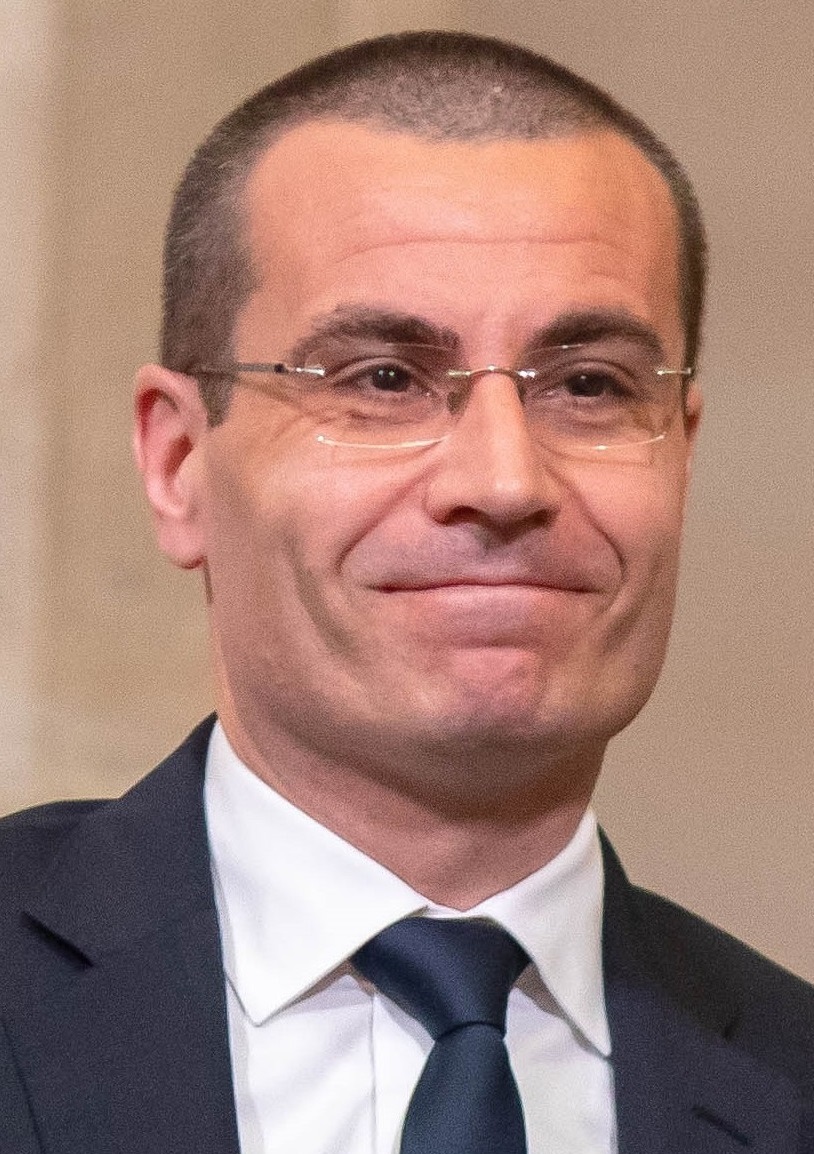 Marco Di Renzo (Fellow, IEEE) received the Laurea (cum laude) and Ph.D. degrees in electrical engineering from the University of L’Aquila, Italy, in 2003 and 2007, respectively, and the Habilitation à Diriger des Recherches (Doctor of Science) degree from University Paris-Sud (currently Paris-Saclay University), France, in 2013. Currently, he is a CNRS Research Director (Professor) and the Head of the Intelligent Physical Communications group in the Laboratory of Signals and Systems (L2S) at Paris-Saclay University – CNRS and CentraleSupelec, Paris, France. Also, he is an elected member of the L2S Board Council and a member of the L2S Management Committee, and is a Member of the Admission and Evaluation Committee of the Ph.D. School on Information and Communication Technologies, Paris-Saclay University. He is a Founding Member and the Academic Vice Chair of the Industry Specification Group (ISG) on Reconfigurable Intelligent Surfaces (RIS) within the European Telecommunications Standards Institute (ETSI), where he served as the Rapporteur for the work item on communication models, channel models, and evaluation methodologies. He is a Fellow of the IEEE, IET, EURASIP, and AAIA; an Academician of AIIA; an Ordinary Member of the European Academy of Sciences and Arts, an Ordinary Member of the Academia Europaea; an Ambassador of the European Association on Antennas and Propagation; and a Highly Cited Researcher. Also, he holds the 2023 France-Nokia Chair of Excellence in ICT, he holds the Tan Chin Tuan Exchange Fellowship in Engineering at Nanyang Technological University (Singapore), and he was a Fulbright Fellow at City University of New York (USA), a Nokia Foundation Visiting Professor (Finland), and a Royal Academy of Engineering Distinguished Visiting Fellow (UK). His recent research awards include the 2021 EURASIP Best Paper Award, the 2022 IEEE COMSOC Outstanding Paper Award, the 2022 Michel Monpetit Prize conferred by the French Academy of Sciences, the 2023 EURASIP Best Paper Award, the 2023 IEEE ICC Best Paper Award, the 2023 IEEE COMSOC Fred W. Ellersick Prize, the 2023 IEEE COMSOC Heinrich Hertz Award, the 2023 IEEE VTS James Evans Avant Garde Award, and the 2023 IEEE COMSOC Technical Recognition Award from the Signal Processing and Computing for Communications Technical Committee. He served as the Editor-in-Chief of IEEE Communications Letters during the period 2019-2023, and he is now serving in the Advisory Board. He is currently serving as a Voting Member of the Fellow Evaluation Standing Committee and as the Director of Journals of the IEEE Communications Society.
Marco Di Renzo (Fellow, IEEE) received the Laurea (cum laude) and Ph.D. degrees in electrical engineering from the University of L’Aquila, Italy, in 2003 and 2007, respectively, and the Habilitation à Diriger des Recherches (Doctor of Science) degree from University Paris-Sud (currently Paris-Saclay University), France, in 2013. Currently, he is a CNRS Research Director (Professor) and the Head of the Intelligent Physical Communications group in the Laboratory of Signals and Systems (L2S) at Paris-Saclay University – CNRS and CentraleSupelec, Paris, France. Also, he is an elected member of the L2S Board Council and a member of the L2S Management Committee, and is a Member of the Admission and Evaluation Committee of the Ph.D. School on Information and Communication Technologies, Paris-Saclay University. He is a Founding Member and the Academic Vice Chair of the Industry Specification Group (ISG) on Reconfigurable Intelligent Surfaces (RIS) within the European Telecommunications Standards Institute (ETSI), where he served as the Rapporteur for the work item on communication models, channel models, and evaluation methodologies. He is a Fellow of the IEEE, IET, EURASIP, and AAIA; an Academician of AIIA; an Ordinary Member of the European Academy of Sciences and Arts, an Ordinary Member of the Academia Europaea; an Ambassador of the European Association on Antennas and Propagation; and a Highly Cited Researcher. Also, he holds the 2023 France-Nokia Chair of Excellence in ICT, he holds the Tan Chin Tuan Exchange Fellowship in Engineering at Nanyang Technological University (Singapore), and he was a Fulbright Fellow at City University of New York (USA), a Nokia Foundation Visiting Professor (Finland), and a Royal Academy of Engineering Distinguished Visiting Fellow (UK). His recent research awards include the 2021 EURASIP Best Paper Award, the 2022 IEEE COMSOC Outstanding Paper Award, the 2022 Michel Monpetit Prize conferred by the French Academy of Sciences, the 2023 EURASIP Best Paper Award, the 2023 IEEE ICC Best Paper Award, the 2023 IEEE COMSOC Fred W. Ellersick Prize, the 2023 IEEE COMSOC Heinrich Hertz Award, the 2023 IEEE VTS James Evans Avant Garde Award, and the 2023 IEEE COMSOC Technical Recognition Award from the Signal Processing and Computing for Communications Technical Committee. He served as the Editor-in-Chief of IEEE Communications Letters during the period 2019-2023, and he is now serving in the Advisory Board. He is currently serving as a Voting Member of the Fellow Evaluation Standing Committee and as the Director of Journals of the IEEE Communications Society.
Sustainable and Multi-functional 6G Networks and Beyond: What Signal Processing Can Do
SPEAKER:
- Christos Masouros
ABSTRACT
The future Global cellular infrastructure will underpin smart city applications, urban security, infrastructure monitoring, smart mobility, among an array of emerging applications that require new network functionalities beyond communications. Key network KPIs for 6G involve Gb/s data rates; cm-level localization; μs-level latency; Tb/Joule energy efficiency. Future networks will also need to support the UN’s Sustainable Development Goals to ensure sustainability, net-zero emissions, resilience and inclusivity. The multifunctionality and the net-zero emissions agenda necessitate a redesign of the signals and waveforms for 6G and beyond. In this tutorial, we will first explore a recent research direction involving symbol-level precoding (SLP) approaches that treat interference as a useful resource in multi-antenna communication systems. These have been shown to offer orders of magnitude savings in power consumption, over a range of communication scenarios. The second part of the tutorial will focus on enabling the multi-functionality of signals and wireless transmissions, as a means of hardware reuse and carbon footprint reduction. We will overview the emerging area of integrated sensing and communications (ISAC), that is a paradigm shift that enables a both sensing and communication functionalities from a single transmission, a single spectrum use and ultimately a common infrastructure. With the rising demand for sustainability and resilience from the network infrastructure, the above technologies are becoming essential building blocks of the wireless network.
BIOGRAPHY OF THE SPEAKER
Christos Masouros (FIEEE, MIET) received the Diploma degree in Electrical and Computer Engineering from the University of Patras, Greece, in 2004, and MSc by research and PhD in Electrical and Electronic Engineering from the University of Manchester, UK in 2006 and 2009 respectively. In 2008 he was a research intern at Philips Research Labs, UK, working on the LTE standards. Between 2009-2010 he was a Research Associate in the University of Manchester and between 2010-2012 a Research Fellow in Queen's University Belfast. In 2012 he joined University College London as a Lecturer. He has held a Royal Academy of Engineering Research Fellowship between 2011-2016.
Since 2019 he is a Full Professor of Signal Processing and Wireless Communications in the Information and Communication Engineering research group, Dept. Electrical and Electronic Engineering, and affiliated with the Institute for Communications and Connected Systems, University College London. His research interests lie in the field of wireless communications and signal processing with particular focus on Green Communications, Large Scale Antenna Systems, Integrated Sensing and Communications, interference mitigation techniques for MIMO and multicarrier communications. Between 2018-22 he was the Project Coordinator of the €4.2m EU H2020 ITN project PAINLESS, involving 12 EU partner universities and industries, towards energy-autonomous networks. Between 2024-28 he will be the Scientific Coordinator of the €2.7m EU H2020 DN project ISLANDS, involving 19 EU partner universities and industries, towards next generation vehicular networks. He is a Fellow of the IEEE, a Fellow of the Asia-Pacific Artificial Intelligence Association (AAIA), and was the recipient of the 2023 IEEE ComSoc Stephen O. Rice Prize, co-recipient of the 2021 IEEE SPS Young Author Best Paper Award and the recipient of the Best Paper Awards in the IEEE GlobeCom 2015 and IEEE WCNC 2019 conferences. He is an IEEE ComSoc Distinguished lecturer 2024-2025, has been recognised as an Exemplary Editor for the IEEE Communications Letters, and as an Exemplary Reviewer for the IEEE Transactions on Communications. He is an Editor for IEEE Transactions on Wireless Communications, the IEEE Open Journal of Signal Processing, and Editor-at-Large for IEEE Open Journal of the Communications Society. He has been an Editor for IEEE Transactions on Communications, IEEE Communications Letters, and a Guest Editor for a number of IEEE Journal on Selected Topics in Signal Processing and IEEE Journal on Selected Areas in Communications issues. He is a founding member and Vice-Chair of the IEEE Emerging Technology Initiative on Integrated Sensing and Communications (SAC), Vice Chair of the IEEE Wireless Communications Technical Committee Special Interest Group on ISAC, and Chair of the IEEE Green Communications & Computing Technical Committee, Special Interest Group on Green ISAC. He is a member of the IEEE Standards Association Working Group on ISAC performance metrics, and a founding member of the ETSI ISG on ISAC. He is the TPC chair for the IEEE ICC 2024 Selected Areas in Communications (SAC) Track on ISAC, and Chair of the "Integrated Imaging and Communications" stream in IEEE CISA 2024.
Where Wi-Fi meets Ultra-High Reliability
SPEAKERS:
- Boris Bellalta
- Francesc Wilhelmi
ABSTRACT
What will Wi-Fi 8 be? Driven by the strict requirements of emerging applications, next-generation Wi-Fi is set to prioritize Ultra High Reliability (UHR) above all. In this tutorial, we explore the journey towards IEEE 802.11bn UHR, the amendment that will form the basis of Wi-Fi 8. After providing an overview of the nearly completed Wi-Fi 7 standard, we present new use cases calling for further Wi-Fi evolution. We also outline current standardization, certification, and spectrum allocation activities, sharing updates from the newly formed UHR Study Group. We then introduce the disruptive new features envisioned for Wi-Fi 8 and discuss the associated research challenges. To conclude, we will shed light on ongoing activities and opportunities associated with the integration and application of AI/ML techniques in Wi-Fi.
BIOGRAPHIES OF THE SPEAKERS
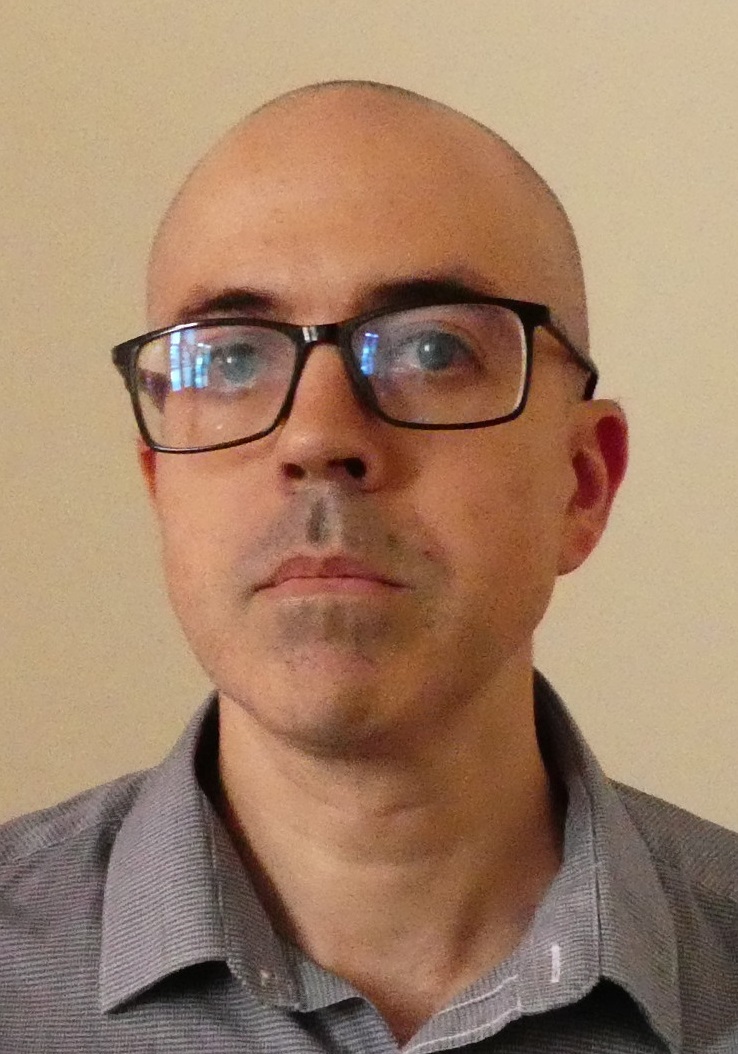 Boris Bellalta is a Full Professor at Universitat Pompeu Fabra (UPF), where he heads the Wireless Networking group. His research interests are in the area of wireless networks and performance evaluation, with emphasis on Wi-Fi technologies, and Machine Learning-based adaptive systems. His recent works on spatial reuse, spectrum aggregation, TXOP sharing and multi-link operation for next-generation Wi-Fi have received special attention from the research community and industry, with on-going collaborations with CISCO and Nokia to work towards Wi-Fi 8. He is currently involved as principal investigator and coordinator in several EU, national and industry funded research projects that aim to push forward our understanding of complex wireless systems, and in particular, contribute to the design of future wireless networks to support XR immersive and holographic communications. The results from his research have been published in 150+ international journal and conference papers. He has supervised 15 PhD students. At UPF he is teaching a course on Machine Learning for Networking, and Wi-Fi in particular. He was the coordinator of the interuniversity (UPF and Universitat Politècnica de Catalunya) Master’s Programme in Wireless Communications (2013-2018). He is Deputy director of the DTIC, in charge of Research, Innovation/Technology Transfer and coordinator of the PhD program.
Boris Bellalta is a Full Professor at Universitat Pompeu Fabra (UPF), where he heads the Wireless Networking group. His research interests are in the area of wireless networks and performance evaluation, with emphasis on Wi-Fi technologies, and Machine Learning-based adaptive systems. His recent works on spatial reuse, spectrum aggregation, TXOP sharing and multi-link operation for next-generation Wi-Fi have received special attention from the research community and industry, with on-going collaborations with CISCO and Nokia to work towards Wi-Fi 8. He is currently involved as principal investigator and coordinator in several EU, national and industry funded research projects that aim to push forward our understanding of complex wireless systems, and in particular, contribute to the design of future wireless networks to support XR immersive and holographic communications. The results from his research have been published in 150+ international journal and conference papers. He has supervised 15 PhD students. At UPF he is teaching a course on Machine Learning for Networking, and Wi-Fi in particular. He was the coordinator of the interuniversity (UPF and Universitat Politècnica de Catalunya) Master’s Programme in Wireless Communications (2013-2018). He is Deputy director of the DTIC, in charge of Research, Innovation/Technology Transfer and coordinator of the PhD program.
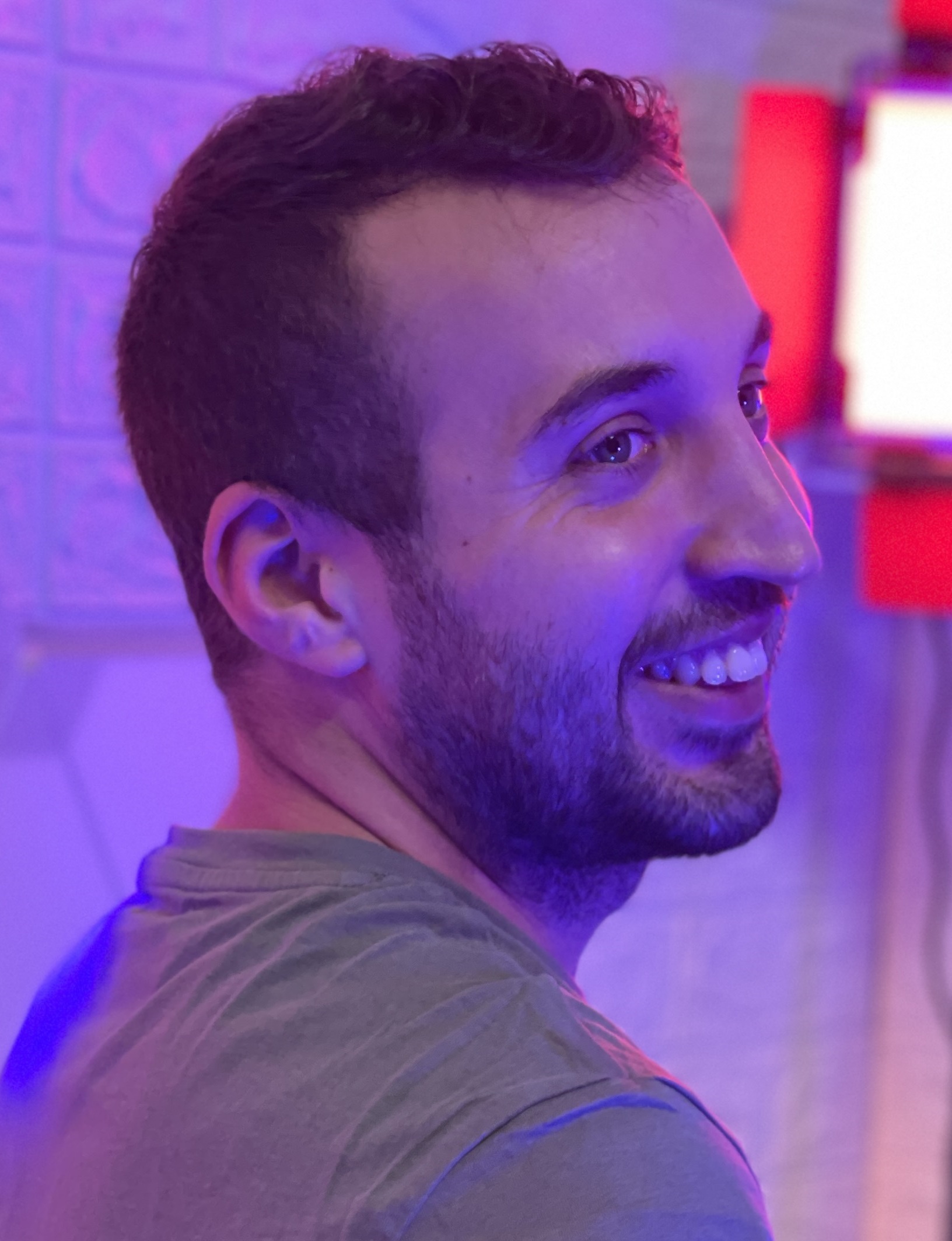 Francesc Wilhelmi is a research engineer at Nokia Bell Labs. He holds a Ph.D. in Information and Communication Technologies (2020) and an M.Sc. in Intelligent and Interactive Systems (2016) from Universitat Pompeu Fabra (UPF). Previously, he was a researcher at Centre Tecnològic de Telecomunicacions de Catalunya (CTTC). His main research interests are in Wi-Fi technologies and their evolution, network simulators and network digital twinning, machine learning, decentralized learning, and distributed ledger technologies. In the past, he was also involved in standardization activities within the ITU-T, where he was one of the main editors of recommendation Y.3181 “Architectural framework for Machine Learning Sandbox in future networks including IMT-2020”. In addition, he has organized three problem statements in the ITU AI/ML in 5G Challenge.
Francesc Wilhelmi is a research engineer at Nokia Bell Labs. He holds a Ph.D. in Information and Communication Technologies (2020) and an M.Sc. in Intelligent and Interactive Systems (2016) from Universitat Pompeu Fabra (UPF). Previously, he was a researcher at Centre Tecnològic de Telecomunicacions de Catalunya (CTTC). His main research interests are in Wi-Fi technologies and their evolution, network simulators and network digital twinning, machine learning, decentralized learning, and distributed ledger technologies. In the past, he was also involved in standardization activities within the ITU-T, where he was one of the main editors of recommendation Y.3181 “Architectural framework for Machine Learning Sandbox in future networks including IMT-2020”. In addition, he has organized three problem statements in the ITU AI/ML in 5G Challenge.
6G Technology Enablers for Connected and Autonomous Vehicles
SPEAKERS:
- Alessandro Bazzi
- Claudia Campolo
ABSTRACT
Next-generation vehicles will be equipped with a plethora of sophisticated sensing and connectivity options as well as embedded computing and decision-making capabilities paving the way for the development of innovative applications aimed at revolutionizing transportation and making it safer, more efficient, and more comfortable. In such a context, a key role will be played by vehicle-to-everything (V2X) communications, through which vehicles (as well as other road players, e.g., pedestrian, cyclists, etc.) can improve the awareness of their surroundings, even under hostile conditions. Thanks to the exchange of information, the knowledge of the scenario can in fact go well beyond the vehicle own perception and allows for effective and efficient cooperative actions. However, nonetheless the huge efforts devoted so far to develop V2X communication technologies and the inherent benefits, they still face issues to deal with the high-capacity, ultra-high reliability and ultra-low latency, and massive data exchange requirements of automotive use cases.
This tutorial will cover the state-of-the-art of V2X communications, from the theoretical perspective of access technologies/protocols and regulations, as well as through practical examples of the most prominent and challenging automotive applications, such as cooperative intersection control. Extensions of IEEE 802.11 and 3GPP 5G New Radio (NR) technologies will be presented as the main competitors in the race to enable the connected and automated vehicles (CAVs) paradigm. Standardization activities as well as recent findings from the literature and instructors’ research will be scanned to present the status quo as well as to identify possible gaps to be filled. Achievements will be shared in the perspective to provide also guidelines for communications in challenging mobile environments well beyond road automated vehicles. Moreover, synergies with ongoing 6G research efforts (e.g., full-duplex, NOMA, edge computing, machine learning) will be discussed to provide hints on future intriguing research opportunities in the CAV realm.
BIOGRAPHIES OF THE SPEAKERS
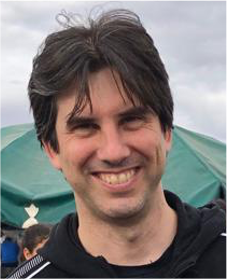 Alessandro Bazzi is an Associate Professor at the University of Bologna, Italy, and an associated member of WiLab in the Consorzio Nazionale Interuniversitario per le Telecomunicazioni (CNIT). He received a Laurea degree (2002) and a PhD degree (2006) in Telecommunications from the University of Bologna. From 2002 to 2019 he was a researcher of the National Research Council of Italy (CNR) and since the academic year 2006/2007 he holds courses at the University of Bologna on wireless systems and networks. His research interests include wireless systems and networks, with focus on the wireless communications technologies for autonomous and connected vehicles. On these topics, he coordinated and coordinates various activities within national and international projects, including Projects in collaborations with major players on V2X like Huawei and NXP. Among these, he is currently leading the national project MoVeOver (https://www.fondazione-restart.it/projects/f15-moveover/) within the RESTART framework, addressing coordinated manoeuvre at intersections. Since 2020 he is the referent of CNIT within the Car2Car Communications Consortium and between 2020 and 2022 he was part of an ETSI specialist task force for the definition of standards for the use of the different channels available for short-range communications involving vehicles in the 5.9 GHz band in Europe. He is author of more than 100 publications on international conference proceedings, journals and book chapters, with an h-index of 33 in Scholar Google and a position within the Stanford’s list of the top 2% of researchers. He received the best paper award at the IEEE ITST 2017 conference. He contributes as a reviewer and TPC member to various international journals and conferences. Related to connected vehicles, he delivered keynotes at ICUMT 2020 and ICTech 2023, he held several lectures at PhD schools and tutorials at international conferences, including IEEE PIMRC, IEEE VTC, IEEE ICC, and IEEE Globecom; he participated as panelist to a panel at IARIA MOBILITY 2012, at IEEE ISWCS 2017, and at IEEE PIMRC 2021, and he organized a special session at PIMRC 2018. He also organized a workshop on time critical cyber physical systems at IEEE PIMRC 2019. He participated to the editorial board of the Scirp OJMSi from 2013 to 2016, he was Guest Editor for a special issue in the Elsevier Journal of Network and Computer Applications in 2018-2019 and for a special issue in the MDPI Journal on Sensor and Actuator Networks in 2019-2020, and he is currently Chief Editor of Hindawi Mobile Information Systems and part of the Editorial Board of the Hindawi Wireless Communications and Mobile Computing and MDPI vehicles. Alessandro is also the coordinator and main developer of the open source WiLabV2Xsim simulator (available at https://github.com/V2Xgithub/WiLabV2Xsim), through which he extensively evaluated the performance of the IEEE 802.11p and C-V2X sidelink technologies and proposed enhancements to them.
Alessandro Bazzi is an Associate Professor at the University of Bologna, Italy, and an associated member of WiLab in the Consorzio Nazionale Interuniversitario per le Telecomunicazioni (CNIT). He received a Laurea degree (2002) and a PhD degree (2006) in Telecommunications from the University of Bologna. From 2002 to 2019 he was a researcher of the National Research Council of Italy (CNR) and since the academic year 2006/2007 he holds courses at the University of Bologna on wireless systems and networks. His research interests include wireless systems and networks, with focus on the wireless communications technologies for autonomous and connected vehicles. On these topics, he coordinated and coordinates various activities within national and international projects, including Projects in collaborations with major players on V2X like Huawei and NXP. Among these, he is currently leading the national project MoVeOver (https://www.fondazione-restart.it/projects/f15-moveover/) within the RESTART framework, addressing coordinated manoeuvre at intersections. Since 2020 he is the referent of CNIT within the Car2Car Communications Consortium and between 2020 and 2022 he was part of an ETSI specialist task force for the definition of standards for the use of the different channels available for short-range communications involving vehicles in the 5.9 GHz band in Europe. He is author of more than 100 publications on international conference proceedings, journals and book chapters, with an h-index of 33 in Scholar Google and a position within the Stanford’s list of the top 2% of researchers. He received the best paper award at the IEEE ITST 2017 conference. He contributes as a reviewer and TPC member to various international journals and conferences. Related to connected vehicles, he delivered keynotes at ICUMT 2020 and ICTech 2023, he held several lectures at PhD schools and tutorials at international conferences, including IEEE PIMRC, IEEE VTC, IEEE ICC, and IEEE Globecom; he participated as panelist to a panel at IARIA MOBILITY 2012, at IEEE ISWCS 2017, and at IEEE PIMRC 2021, and he organized a special session at PIMRC 2018. He also organized a workshop on time critical cyber physical systems at IEEE PIMRC 2019. He participated to the editorial board of the Scirp OJMSi from 2013 to 2016, he was Guest Editor for a special issue in the Elsevier Journal of Network and Computer Applications in 2018-2019 and for a special issue in the MDPI Journal on Sensor and Actuator Networks in 2019-2020, and he is currently Chief Editor of Hindawi Mobile Information Systems and part of the Editorial Board of the Hindawi Wireless Communications and Mobile Computing and MDPI vehicles. Alessandro is also the coordinator and main developer of the open source WiLabV2Xsim simulator (available at https://github.com/V2Xgithub/WiLabV2Xsim), through which he extensively evaluated the performance of the IEEE 802.11p and C-V2X sidelink technologies and proposed enhancements to them.
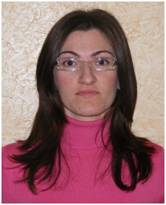 Claudia Campolo is an Associate Professor of Telecommunications at University Mediterranea of Reggio Calabria, Italy and an associated member of WiLab in CNIT. She received a Laurea degree in Telecommunications Engineering (2007) and a PhD degree (2011) from the same university. In 2008 she was a visiting PhD student at Politecnico di Torino and a DAAD fellow at University of Paderborn, Germany in 2015. Her main research interests are in the field of vehicular networking, 5G/6G systems, and future Internet architectures. She is author of more than 160 publications in international journals, conferences and book chapters, with an h-index equal to 37 (Scopus) and 43 (Scholar Google) and >5250 citations (Scopus) and 7500 (Scholar Google). She has been listed in the Stanford’s list of the top 2% of researchers (years 2020, 2021, 2022). She has received 3 best paper awards for research in the vehicular networking field and the IEEE ComSoc EMEA Outstanding Young Researcher Award in 2015. She is involved in the organization of many international conferences as TPC/publicity/track chair, workshop organizer and she gave tutorials about vehicular networking at IEEE WCNC 2012, 2018 and 2019, IEEE ICC 2017, EUCNC 2017, IEEE PIMRC 2019. She was invited to participate to the Dagsthul Seminar on “Inter-vehicular Communication Towards Cooperative Driving”, in May 2018. She was the organizer of the panel “V2X Connectivity and Learning on the Road towards Cooperative Automated Driving” at IEEE PIMRC 2021. She is currently editor for IEEE Transactions on Vehicular Technology, IEEE Communications Letters, IEEE Open Journal of I TS, Computer Networks, Sensors. She was co-editor of the book “Vehicular ad hoc network: standards, solutions and research”, Springer-Verlag 2015, and Guest Editor of the special issue on “Multi-radio, Multi-technology, Multi-system Vehicular Communications”, in Computer Communications, 2016 and for the Special Issue on “5G-V2X Communications and Networking for Connected and Autonomous Vehicles”, in Future Internet journal. She is currently scientific responsible of the research activities of the team at the University of Reggio Calabria within the Spoke ‘Connected and Autonomous Vehicle (CAV)’ of the MOST (https://www.centronazionalemost.it/eg/) initiative funded by the NextGenerationEU action.Claudia Campolo is an Associate Professor of Telecommunications at University Mediterranea of Reggio Calabria, Italy and an associated member of WiLab in CNIT. She received a Laurea degree in Telecommunications Engineering (2007) and a PhD degree (2011) from the same university. In 2008 she was a visiting PhD student at Politecnico di Torino and a DAAD fellow at University of Paderborn, Germany in 2015. Her main research interests are in the field of vehicular networking, 5G/6G systems, and future Internet architectures. She is author of more than 160 publications in international journals, conferences and book chapters, with an h-index equal to 37 (Scopus) and 43 (Scholar Google) and >5250 citations (Scopus) and 7500 (Scholar Google). She has been listed in the Stanford’s list of the top 2% of researchers (years 2020, 2021, 2022). She has received 3 best paper awards for research in the vehicular networking field and the IEEE ComSoc EMEA Outstanding Young Researcher Award in 2015. She is involved in the organization of many international conferences as TPC/publicity/track chair, workshop organizer and she gave tutorials about vehicular networking at IEEE WCNC 2012, 2018 and 2019, IEEE ICC 2017, EUCNC 2017, IEEE PIMRC 2019. She was invited to participate to the Dagsthul Seminar on “Inter-vehicular Communication Towards Cooperative Driving”, in May 2018. She was the organizer of the panel “V2X Connectivity and Learning on the Road towards Cooperative Automated Driving” at IEEE PIMRC 2021. She is currently editor for IEEE Transactions on Vehicular Technology, IEEE Communications Letters, IEEE Open Journal of I TS, Computer Networks, Sensors. She was co-editor of the book “Vehicular ad hoc network: standards, solutions and research”, Springer-Verlag 2015, and Guest Editor of the special issue on “Multi-radio, Multi-technology, Multi-system Vehicular Communications”, in Computer Communications, 2016 and for the Special Issue on “5G-V2X Communications and Networking for Connected and Autonomous Vehicles”, in Future Internet journal. She is currently scientific responsible of the research activities of the team at the University of Reggio Calabria within the Spoke ‘Connected and Autonomous Vehicle (CAV)’ of the MOST (https://www.centronazionalemost.it/eg/) initiative funded by the NextGenerationEU action.
Claudia Campolo is an Associate Professor of Telecommunications at University Mediterranea of Reggio Calabria, Italy and an associated member of WiLab in CNIT. She received a Laurea degree in Telecommunications Engineering (2007) and a PhD degree (2011) from the same university. In 2008 she was a visiting PhD student at Politecnico di Torino and a DAAD fellow at University of Paderborn, Germany in 2015. Her main research interests are in the field of vehicular networking, 5G/6G systems, and future Internet architectures. She is author of more than 160 publications in international journals, conferences and book chapters, with an h-index equal to 37 (Scopus) and 43 (Scholar Google) and >5250 citations (Scopus) and 7500 (Scholar Google). She has been listed in the Stanford’s list of the top 2% of researchers (years 2020, 2021, 2022). She has received 3 best paper awards for research in the vehicular networking field and the IEEE ComSoc EMEA Outstanding Young Researcher Award in 2015. She is involved in the organization of many international conferences as TPC/publicity/track chair, workshop organizer and she gave tutorials about vehicular networking at IEEE WCNC 2012, 2018 and 2019, IEEE ICC 2017, EUCNC 2017, IEEE PIMRC 2019. She was invited to participate to the Dagsthul Seminar on “Inter-vehicular Communication Towards Cooperative Driving”, in May 2018. She was the organizer of the panel “V2X Connectivity and Learning on the Road towards Cooperative Automated Driving” at IEEE PIMRC 2021. She is currently editor for IEEE Transactions on Vehicular Technology, IEEE Communications Letters, IEEE Open Journal of I TS, Computer Networks, Sensors. She was co-editor of the book “Vehicular ad hoc network: standards, solutions and research”, Springer-Verlag 2015, and Guest Editor of the special issue on “Multi-radio, Multi-technology, Multi-system Vehicular Communications”, in Computer Communications, 2016 and for the Special Issue on “5G-V2X Communications and Networking for Connected and Autonomous Vehicles”, in Future Internet journal. She is currently scientific responsible of the research activities of the team at the University of Reggio Calabria within the Spoke ‘Connected and Autonomous Vehicle (CAV)’ of the MOST (https://www.centronazionalemost.it/eg/) initiative funded by the NextGenerationEU action.Claudia Campolo is an Associate Professor of Telecommunications at University Mediterranea of Reggio Calabria, Italy and an associated member of WiLab in CNIT. She received a Laurea degree in Telecommunications Engineering (2007) and a PhD degree (2011) from the same university. In 2008 she was a visiting PhD student at Politecnico di Torino and a DAAD fellow at University of Paderborn, Germany in 2015. Her main research interests are in the field of vehicular networking, 5G/6G systems, and future Internet architectures. She is author of more than 160 publications in international journals, conferences and book chapters, with an h-index equal to 37 (Scopus) and 43 (Scholar Google) and >5250 citations (Scopus) and 7500 (Scholar Google). She has been listed in the Stanford’s list of the top 2% of researchers (years 2020, 2021, 2022). She has received 3 best paper awards for research in the vehicular networking field and the IEEE ComSoc EMEA Outstanding Young Researcher Award in 2015. She is involved in the organization of many international conferences as TPC/publicity/track chair, workshop organizer and she gave tutorials about vehicular networking at IEEE WCNC 2012, 2018 and 2019, IEEE ICC 2017, EUCNC 2017, IEEE PIMRC 2019. She was invited to participate to the Dagsthul Seminar on “Inter-vehicular Communication Towards Cooperative Driving”, in May 2018. She was the organizer of the panel “V2X Connectivity and Learning on the Road towards Cooperative Automated Driving” at IEEE PIMRC 2021. She is currently editor for IEEE Transactions on Vehicular Technology, IEEE Communications Letters, IEEE Open Journal of I TS, Computer Networks, Sensors. She was co-editor of the book “Vehicular ad hoc network: standards, solutions and research”, Springer-Verlag 2015, and Guest Editor of the special issue on “Multi-radio, Multi-technology, Multi-system Vehicular Communications”, in Computer Communications, 2016 and for the Special Issue on “5G-V2X Communications and Networking for Connected and Autonomous Vehicles”, in Future Internet journal. She is currently scientific responsible of the research activities of the team at the University of Reggio Calabria within the Spoke ‘Connected and Autonomous Vehicle (CAV)’ of the MOST (https://www.centronazionalemost.it/eg/) initiative funded by the NextGenerationEU action.
Age of information (AoI): A Tool for Designing Time-Critical Networks
SPEAKERS:
- Jorge Torres Gomez
- Nikolaos Pappas
ABSTRACT
The Age of Information (AoI) concept has gained significant traction in the research community, emerging as a vital tool for time-critical applications. AoI-related metrics are particularly pertinent in scenarios requiring real-time data, such as tracking and remote sensing. For example, in healthcare applications utilizing Internet of Things (IoT) networks, timely updates of physiological variables are crucial. Similarly, in self-driving applications, rapid updates of vehicle locations are essential for collision prevention and maneuvering. This tutorial aims to elucidate the theoretical underpinnings of AoI and engage participants in hands-on activities to grasp its fundamentals and applications. The tutorial will delve into the conceptual origins of AoI, providing intuitive insights, and offer practical illustrations showcasing its applicability across diverse domains, including IoT networks, Intelligent Transportation Systems (ITS), and the burgeoning field of molecular networks. Attendees will also receive hands-on training, implementing AoI-related metrics to enhance their understanding of this critical concept.
BIOGRAPHIES OF THE SPEAKERS
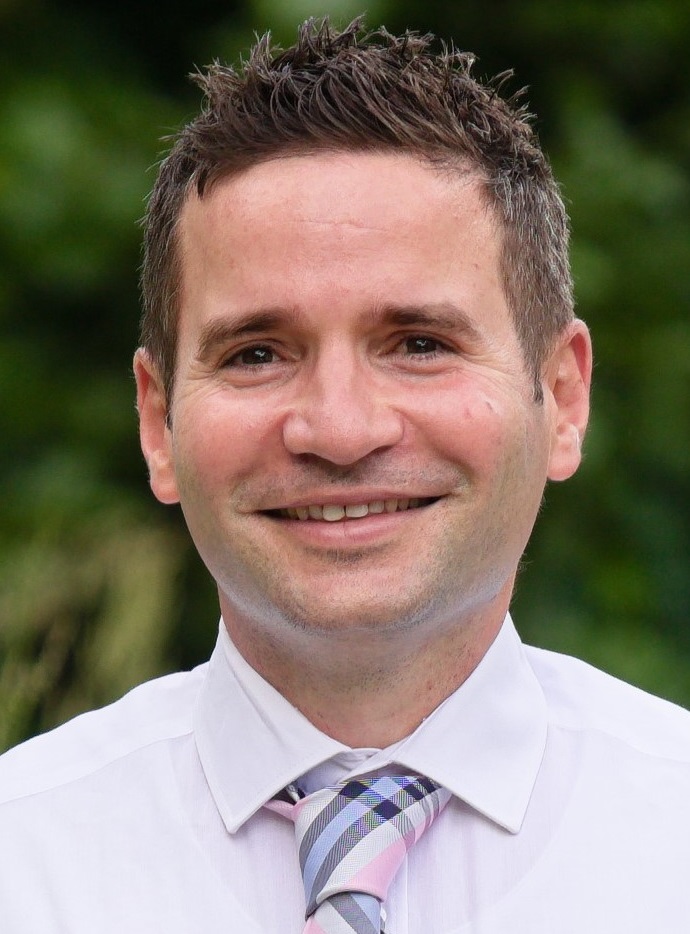 Jorge Torres Gómez (Senior Member, IEEE) received the B.Sc., M.Sc., and Ph.D. degrees from the Technological University of Havana, CUJAE, Cuba, in 2008, 2010, and 2015, respectively. He is currently a Senior Researcher with the Telecommunication Networks Group, School of Electrical Engineering and Computer Science, Technical University of Berlin in Germany. He serves as head of educational activities at the IEEE Germany Section, supporting teaching activities and chairing conferences in education. He has been leading and participating in projects related to nanocommunications and 6G. He has given invited talks on the age of information and molecular communications. He has authored and co-authored research papers focusing on the age of information, molecular communications, digital signal processing, wireless networks, and teaching.Jorge Torres Gómez (Senior Member, IEEE) received the B.Sc., M.Sc., and Ph.D. degrees from the Technological University of Havana, CUJAE, Cuba, in 2008, 2010, and 2015, respectively. He is currently a Senior Researcher with the Telecommunication Networks Group, School of Electrical Engineering and Computer Science, Technical University of Berlin in Germany. He serves as head of educational activities at the IEEE Germany Section, supporting teaching activities and chairing conferences in education. He has been leading and participating in projects related to nanocommunications and 6G. He has given invited talks on the age of information and molecular communications. He has authored and co-authored research papers focusing on the age of information, molecular communications, digital signal processing, wireless networks, and teaching.
Jorge Torres Gómez (Senior Member, IEEE) received the B.Sc., M.Sc., and Ph.D. degrees from the Technological University of Havana, CUJAE, Cuba, in 2008, 2010, and 2015, respectively. He is currently a Senior Researcher with the Telecommunication Networks Group, School of Electrical Engineering and Computer Science, Technical University of Berlin in Germany. He serves as head of educational activities at the IEEE Germany Section, supporting teaching activities and chairing conferences in education. He has been leading and participating in projects related to nanocommunications and 6G. He has given invited talks on the age of information and molecular communications. He has authored and co-authored research papers focusing on the age of information, molecular communications, digital signal processing, wireless networks, and teaching.Jorge Torres Gómez (Senior Member, IEEE) received the B.Sc., M.Sc., and Ph.D. degrees from the Technological University of Havana, CUJAE, Cuba, in 2008, 2010, and 2015, respectively. He is currently a Senior Researcher with the Telecommunication Networks Group, School of Electrical Engineering and Computer Science, Technical University of Berlin in Germany. He serves as head of educational activities at the IEEE Germany Section, supporting teaching activities and chairing conferences in education. He has been leading and participating in projects related to nanocommunications and 6G. He has given invited talks on the age of information and molecular communications. He has authored and co-authored research papers focusing on the age of information, molecular communications, digital signal processing, wireless networks, and teaching.
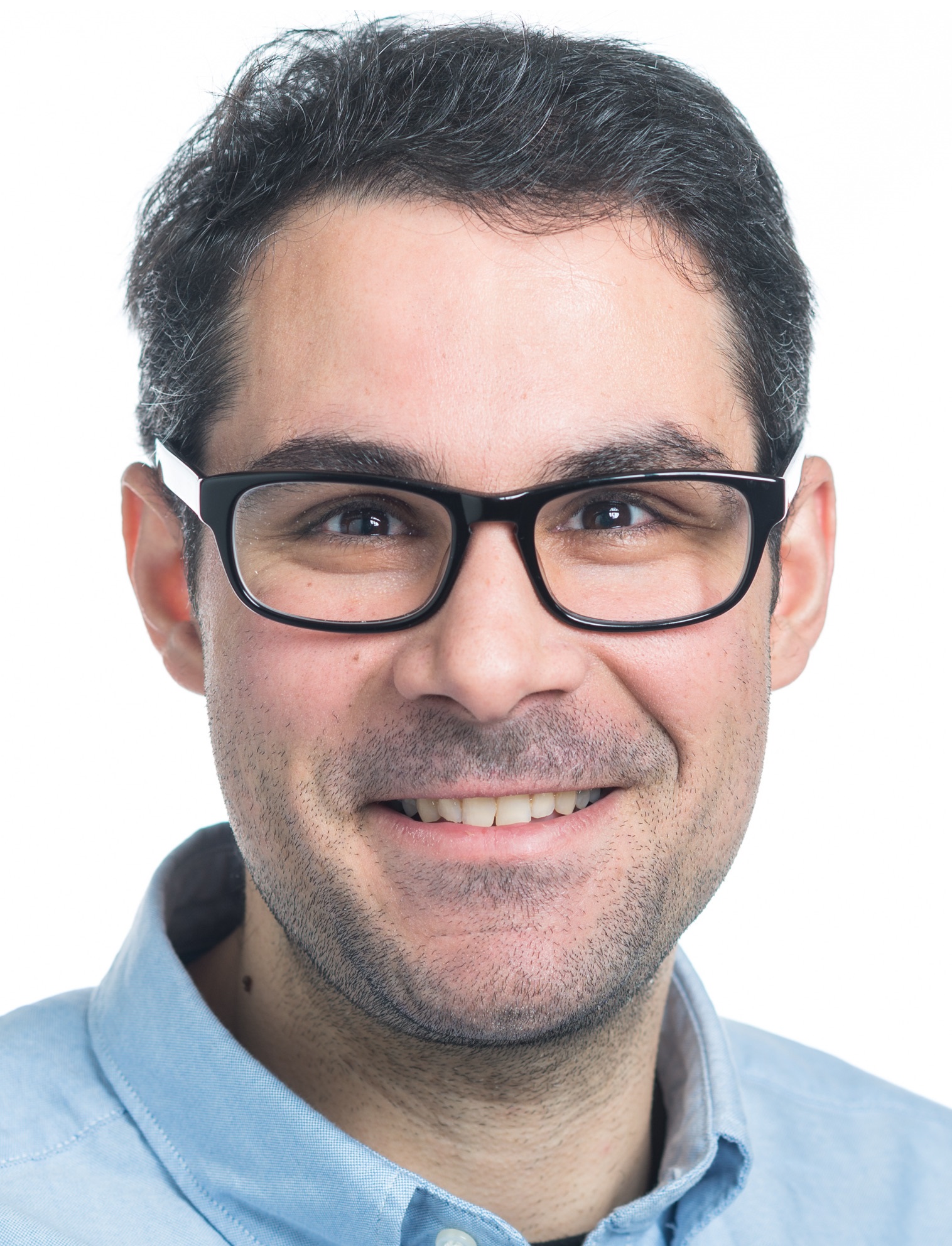 Nikolaos Pappas (Senior Member, IEEE) received the B.Sc. degree in computer science, the B.Sc. degree in mathematics, the M.Sc. degree in computer science, and the Ph.D. degree in computer science from the University of Crete, Greece, in 2005, 2012, 2007, and 2012, respectively. From 2005 to 2012, he was a Graduate Research Assistant with the Telecommunications and Networks Laboratory, Institute of Computer Science, FORTH, Heraklion, Greece, and a Visiting Scholar with the Institute of Systems Research, University of Maryland at College Park, College Park, MD, USA. From 2012 to 2014, he was a postdoctoral Researcher with the Department of Telecommunications, CentraleSupélec, Gif-sur-Yvette, France. He is currently an Associate Professor with the Department of Computer and Information Science, Linkoping University, Linköping, Sweden. His main research interests include the field of wireless communication networks with an emphasis on semantics-aware communications, energy harvesting networks, networklevel cooperation, age of information, and stochastic geometry. Dr. Pappas has served as the Symposium Co-Chair of the IEEE International Conference on Communications in 2022 and the IEEE Wireless Communications and Networking Conference in 2022. He is an Editor of the IEEE TRANSACTIONS ON COMMUNICATIONS, the IEEE Transactions on Machine Learning in Communications and Networking, the IEEE/KICS JOURNAL OF COMMUNICATIONS AND NETWORKS, area editor of the IEEE OPEN JOURNAL OF THE COMMUNICATIONS SOCIETY and an Expert Editor for invited papers of the IEEE COMMUNICATIONS LETTERS. He is a guest editor of the IEEE Internet of Things Magazine and the IEEE Network. He was a Guest Editor of the IEEE INTERNET OF THINGS JOURNAL on “Age of Information and Data Semantics for Sensing, Communication and Control Co-Design in IoT.”
Nikolaos Pappas (Senior Member, IEEE) received the B.Sc. degree in computer science, the B.Sc. degree in mathematics, the M.Sc. degree in computer science, and the Ph.D. degree in computer science from the University of Crete, Greece, in 2005, 2012, 2007, and 2012, respectively. From 2005 to 2012, he was a Graduate Research Assistant with the Telecommunications and Networks Laboratory, Institute of Computer Science, FORTH, Heraklion, Greece, and a Visiting Scholar with the Institute of Systems Research, University of Maryland at College Park, College Park, MD, USA. From 2012 to 2014, he was a postdoctoral Researcher with the Department of Telecommunications, CentraleSupélec, Gif-sur-Yvette, France. He is currently an Associate Professor with the Department of Computer and Information Science, Linkoping University, Linköping, Sweden. His main research interests include the field of wireless communication networks with an emphasis on semantics-aware communications, energy harvesting networks, networklevel cooperation, age of information, and stochastic geometry. Dr. Pappas has served as the Symposium Co-Chair of the IEEE International Conference on Communications in 2022 and the IEEE Wireless Communications and Networking Conference in 2022. He is an Editor of the IEEE TRANSACTIONS ON COMMUNICATIONS, the IEEE Transactions on Machine Learning in Communications and Networking, the IEEE/KICS JOURNAL OF COMMUNICATIONS AND NETWORKS, area editor of the IEEE OPEN JOURNAL OF THE COMMUNICATIONS SOCIETY and an Expert Editor for invited papers of the IEEE COMMUNICATIONS LETTERS. He is a guest editor of the IEEE Internet of Things Magazine and the IEEE Network. He was a Guest Editor of the IEEE INTERNET OF THINGS JOURNAL on “Age of Information and Data Semantics for Sensing, Communication and Control Co-Design in IoT.”
Data Engineering in Telecommunication Networks: An Emerging Topic in Network Management and Orchestration
SPEAKERS:
- Engin Zeydan
- Jordi Baranda
ABSTRACT
Application of data engineering concepts in the management and orchestration of telecommunication networks is an emerging topic and will be most important in the coming years as well. The tutorial will cover an in-depth study of convergence of data engineering in network management and orchestration domain. The first part will be background information on data engineering and second part will be on application of those technologies to network management problems. In the second part, there will also be step-by-step demonstration of one of the demos. The attendees to this tutorial will have the chance to learn more about data engineering for networking and its applications from the perspective of telecommunication operators.
BIOGRAPHIES OF THE SPEAKERS
 Engin Zeydan received his PhD degree in February 2011 from the Department of Electrical and Computer Engineering at Stevens Institute of Technology, Hoboken, NJ, USA. He is currently a senior researcher in the Services as Networks (SaS) Research Unit in CTTC in Barcelona, Spain. He was the Project Coordinator of the European H2020 5GPP MonB5G project (2021-2023). Dr. Engin Zeydan has many years of experience as a researcher in EU Framework Programmes at technical and administrative levels in both industry and research organizations and has been involved in several projects including FP7 STREPs, Celtic, ITEA and H2020 as Technical Lead and WP Lead. His research activities include outstanding publications (more than 120 papers in leading conferences and journals and 10 national patents) and successful participation in research-funded projects mainly focused on telecommunications and data science/engineering.
Engin Zeydan received his PhD degree in February 2011 from the Department of Electrical and Computer Engineering at Stevens Institute of Technology, Hoboken, NJ, USA. He is currently a senior researcher in the Services as Networks (SaS) Research Unit in CTTC in Barcelona, Spain. He was the Project Coordinator of the European H2020 5GPP MonB5G project (2021-2023). Dr. Engin Zeydan has many years of experience as a researcher in EU Framework Programmes at technical and administrative levels in both industry and research organizations and has been involved in several projects including FP7 STREPs, Celtic, ITEA and H2020 as Technical Lead and WP Lead. His research activities include outstanding publications (more than 120 papers in leading conferences and journals and 10 national patents) and successful participation in research-funded projects mainly focused on telecommunications and data science/engineering.
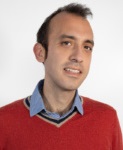 Jordi Baranda received the M.S. and Ph.D. degrees in telecommunications engineering from the Technical University of Catalonia (UPC), in 2008 and 2021, respectively. He is currently a Senior Researcher with the Services as Networks (SaS) Research Unit at the Centre Tecnològic de Telecomunicacions Catalunya (CTTC), Barcelona. At CTTC, he has participated in several European, national, and industrial projects related to the management and orchestration of SDN/NFV mobile networks, efficient routing strategies for mobile network backhauling, and novel wireless communication systems. He has coauthored over 70 different peer-reviewed journal and conference papers.Jordi Baranda received the M.S. and Ph.D. degrees in telecommunications engineering from the Technical University of Catalonia (UPC), in 2008 and 2021, respectively. He is currently a Senior Researcher with the Services as Networks (SaS) Research Unit at the Centre Tecnològic de Telecomunicacions Catalunya (CTTC), Barcelona. At CTTC, he has participated in several European, national, and industrial projects related to the management and orchestration of SDN/NFV mobile networks, efficient routing strategies for mobile network backhauling, and novel wireless communication systems. He has coauthored over 70 different peer-reviewed journal and conference papers.
Jordi Baranda received the M.S. and Ph.D. degrees in telecommunications engineering from the Technical University of Catalonia (UPC), in 2008 and 2021, respectively. He is currently a Senior Researcher with the Services as Networks (SaS) Research Unit at the Centre Tecnològic de Telecomunicacions Catalunya (CTTC), Barcelona. At CTTC, he has participated in several European, national, and industrial projects related to the management and orchestration of SDN/NFV mobile networks, efficient routing strategies for mobile network backhauling, and novel wireless communication systems. He has coauthored over 70 different peer-reviewed journal and conference papers.Jordi Baranda received the M.S. and Ph.D. degrees in telecommunications engineering from the Technical University of Catalonia (UPC), in 2008 and 2021, respectively. He is currently a Senior Researcher with the Services as Networks (SaS) Research Unit at the Centre Tecnològic de Telecomunicacions Catalunya (CTTC), Barcelona. At CTTC, he has participated in several European, national, and industrial projects related to the management and orchestration of SDN/NFV mobile networks, efficient routing strategies for mobile network backhauling, and novel wireless communication systems. He has coauthored over 70 different peer-reviewed journal and conference papers.


